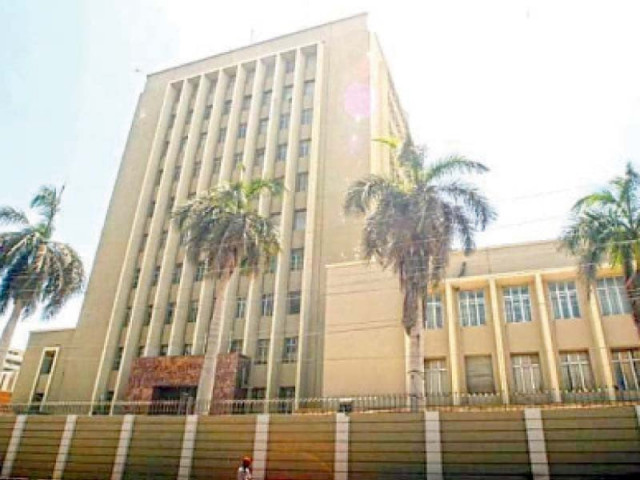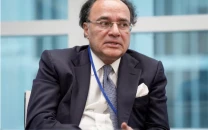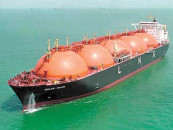'SBP may reduce key policy rate by 400-500 basis points'
Research house foresees further currency stability, credit rating upgrades

The Pakistani rupee is projected to remain stable within the range of Rs277-282/$ over the remaining seven months of the current fiscal year, ending June 30, 2025, defying earlier expectations of Rs300 or higher. The currency has appreciated by 0.3% in the first four months (July-October) of the fiscal year, closing at Rs277.70/$ on Friday, according to Topline Research.
The research house projects that the State Bank of Pakistan (SBP) will reduce its key policy interest rate by a total of 400-500 basis points, bringing it down to 12.5-13.5% by the end of the fiscal year from the current 17.5%. Capital markets anticipate an immediate reduction of 200 basis points, which would bring the rate to 15.5% on Monday, November 4, following a second consecutive month of single-digit inflation, with October's reading at 7.2%.
The SBP has already slashed the policy rate by a cumulative 450 basis points since June 2024, with reductions announced in the past three consecutive monetary policies. An anticipated fourth consecutive cut in the rate would lower financing costs for businesses, encouraging them to expand production capacities and contribute to economic growth during the year.
Financial experts predict that the central bank may opt for a rate cut of 100-300 basis points on Monday, as the real interest rate (policy rate minus current inflation rate) has risen to around 10%, compared to a historical average of approximately 3-4%. However, the SBP is expected to avoid a larger cut of over 200 basis points to prevent a sudden spike in US dollar demand, as cheaper financing could stimulate aggregate demand from consumers and businesses alike.
In a report titled 'Pakistan Economy - Towards Recovery; External and Monetary Accounts Improving', Topline Research Deputy Head of Research Shankar Talreja predicted that global credit rating agencies would further upgrade Pakistan's ratings in light of improved foreign exchange reserves. Two rating agencies have already upgraded Pakistan's credit rating by one notch as an early indicator of external stability. Fitch upgraded Pakistan's long-term issuer rating to CCC+ on July 29, 2024, and Moody's followed with an upgrade to Caa2 on August 28, 2024. "We expect further improvement in Pakistan's rating due to rising foreign exchange reserves, which will facilitate issuance of long-term instruments in international capital markets in the coming years," Talreja noted.
Pakistan's foreign exchange reserves are expected to reach $13 billion by the end of June 2025, a milestone last achieved in March 2022. This improvement is attributed to the successful completion of a previous $3 billion Standby Arrangement (SBA) and the anticipated start of a new $7 billion International Monetary Fund (IMF) programme, which could unlock additional funding from bilateral and multilateral sources.
Due to external account stability and higher inflows, the Pakistani rupee has appreciated 2.6% in FY24 and 0.3% in FY25 to date against the US dollar. "We anticipate the rupee to remain in the range of Rs277-282/$ by June 2025 and around Rs295-300/$ by June 2026," Talreja added.
Pakistan's external repayment obligations, excluding rollovers and refinances, are projected at $10 billion for FY25, according to SBP governor's remarks in a recent analyst briefing. The current account deficit is expected to remain at a manageable $1.3 billion for FY25, bringing the total gross financing requirement (net of rollovers/refinances) to $11.3 billion. Talreja noted that Pakistan's gross external financing requirement, according to IMF estimates, has reached a nine-year low of $18.8 billion.
Real GDP growth is expected to stay moderate at 2.5-3% in FY25, partly due to subdued growth in the agriculture sector, which is experiencing challenges with cotton and wheat crops. "GDP growth is likely to be driven by the services sector amid a gradual recovery in economic activities," Talreja observed.
"Agriculture, which posted a 19-year high growth of 6.4% in FY24, is now expected to post only 1% growth as major crops face an anticipated contraction of 8.1% due to poor cotton and wheat yields," Talreja explained.
Average inflation for FY25 is expected to range between 7-8%, a sharp drop from 23.4% recorded in FY24. The rapid decline is attributed to a high base effect, faster disinflation in the food segment, and negative fuel cost adjustments in September and October 2024, according to Talreja.



















COMMENTS
Comments are moderated and generally will be posted if they are on-topic and not abusive.
For more information, please see our Comments FAQ